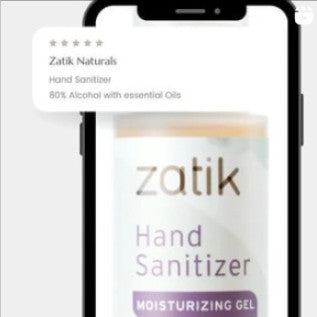As a word, it doesn’t sound all that pleasant, but exfoliating can actually be quite a pleasant experience for your skin. Do you know how to exfoliate your skin properly? And, perhaps more important: do you know why you should?
What is Exfoliating?
Exfoliate is more or less a fancy word for scrubbing away dead skin cells. This can be done by literally scrubbing, with an abrasive, or with potent ingredients like fruit acids that achieve the same results without the physical necessity of a brush.
The best road to smoother, healthier skin, may lie in the middle of those two—a scrubbing product rich in natural ingredients that help to slough off dead skin cells.
“In addition to revealing fresh skin cells, exfoliating removes dead cells from pores, making them appear smaller,” Rachel Nazarian, M.D., a Manhattan dermatologist, told Cosmopolitan.
If you’re wondering whether simply washing the skin do this already, you’re not alone. The answer is yes. And no.
Washing the skin removes dirt, makeup, excess oil. And while it does remove some dead skin cells, it really depends on what you’re washing your face with, and how.
Why Exfoliate?
Think of exfoliating like oxy-boosting your laundry, or putting relatively clean dishes through the dishwasher. It goes deeper into the process, delivering you healthy and cleaner skin.
If we don’t use an exfoliating product, skin can look sallow, oily, and even be prone to more breakouts. That’s because, like Nazarian says, it removes the dead skin cells (and there are a lot of them).
“Removing the buildup enhances your skin’s ability to absorb everything else, from acne medicine to antiaging serum,” says Dr. Nazarian.
Without exfoliating, applying those expensive and fancy skin care products to your face is a bit like trying to paint your toenails through your socks.
How to Exfoliate
There is no shortage of products claiming to exfoliate the skin. The onus is always on us, the consumers, to determine what’s best for our skin.
If you have sensitive skin—skin prone to breakouts, sensitive skin, or skin prone to dryness, avoid those harsh scrubs. That means no ground up nut shells, salts, or sugar scrubs or any tools (like harsh brushes or exfoliating mitts) that can agitate skin. If you’ve got fairly normal skin, these products may work fine.
Sensitive skin and those prone to breakouts may work best with chemical products (not necessarily synthetic, mind you). These can be skin care toner or serums loaded with astringent fruit acids (often listed as alpha hydroxy acids) and other botanicals that have a sloughing effect on the skin, but without the physical disruption of a scrub. You can also look at getting professional skin peels—but again, opt for products that rely on fruit acids and other natural ingredients instead of harsh synthetic chemicals.
Fortunately, microbeads are now vanishing from skin care products, so you don’t have to worry about those damaging the environment anymore. But avoid them at all costs for your skin’s health, too. Rubbing plastic all over your face is never a good practice.
And note that body scrubs or other exfoliants targeting the whole body may not be suitable for your face as they can be harsher (like salt scrubs). But don’t ignore your body, either! Sugar scrubs before shaving your legs can mean a smoother and cleaner shave. And regularly scrubbing feet can help to reduce callouses and corns.
How Often to Exfoliate?
This really depends on your skin type. Those with sensitive skin may find weekly exfoliating is enough, while others may report benefits daily. It may be best to use a gentle exfoliating toner or serum daily, and a more intense exfoliating product every week or so.




